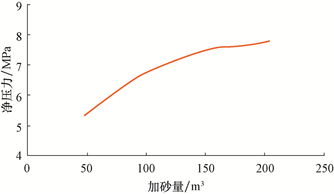Sand Colic Treatment: A Comprehensive Guide for Horse Owners
As a horse owner, you know that maintaining the health of your equine companion is a top priority. One common issue that can affect horses is sand colic, a painful condition that can lead to serious complications if not treated promptly. In this article, we will delve into the details of sand colic treatment, covering various aspects such as symptoms, causes, and effective management strategies.
Symptoms of Sand Colic

Sand colic is characterized by abdominal pain, which can manifest in several ways. Pay close attention to the following signs:
-
Abdominal pain or discomfort
-
Reduced appetite
-
Increased lying down and kicking at the belly
-
Distended abdomen
-
Change in behavior, such as restlessness or aggression
Causes of Sand Colic

Sand colic occurs when sand accumulates in the horse’s digestive tract, particularly in the large intestine. This can happen due to several factors:
-
Insufficient forage: Horses that do not have access to enough forage are more prone to sand colic, as they may consume sand to satisfy their need for roughage.
-
High-sand bedding: Bedding materials such as wood shavings or straw can contain sand, which can be ingested by the horse.
-
Stress: Stress can lead to changes in the horse’s eating habits, increasing the risk of sand ingestion.
Diagnosis and Treatment

Diagnosing sand colic can be challenging, as the symptoms can be similar to other conditions. However, a veterinarian can perform various tests to confirm the diagnosis, such as abdominal palpation, radiographs, and endoscopy.
Once diagnosed, treatment for sand colic may include:
-
Stabilization: The horse will be kept in a calm, quiet environment to prevent further stress.
-
Fluid therapy: Intravenous fluids may be administered to maintain hydration and electrolyte balance.
-
Medications: Pain relievers and anti-inflammatory drugs may be prescribed to alleviate symptoms.
-
Manual treatment: In some cases, a veterinarian may perform manual treatment, such as sand removal or colic surgery.
Prevention and Management
Preventing sand colic involves addressing the underlying causes and implementing effective management strategies:
-
Provide adequate forage: Ensure your horse has access to a constant supply of forage, such as hay or pasture, to reduce the risk of sand ingestion.
-
Use low-sand bedding: Opt for bedding materials with low sand content, such as paper or rubber mats.
-
Monitor stress levels: Identify and address stressors in your horse’s environment to minimize the risk of sand colic.
-
Regular veterinary check-ups: Schedule regular visits with your veterinarian to monitor your horse’s health and address any potential issues early on.
Table: Sand Colic Treatment Options
| Treatment Option | Description |
|---|---|
| Stabilization | Keep the horse in a calm, quiet environment to prevent further stress. |
| Fluid Therapy | Administer intravenous fluids to maintain hydration and electrolyte balance. |
| Medications | Pain relievers and anti-inflammatory drugs to alleviate symptoms. |
| Manual Treatment | Manual sand removal or colic surgery, performed by a veterinarian. |
By understanding the causes, symptoms, and treatment options for sand colic, you can take proactive steps to protect your horse’s health. Remember, early detection and prompt treatment are crucial in managing this condition effectively.